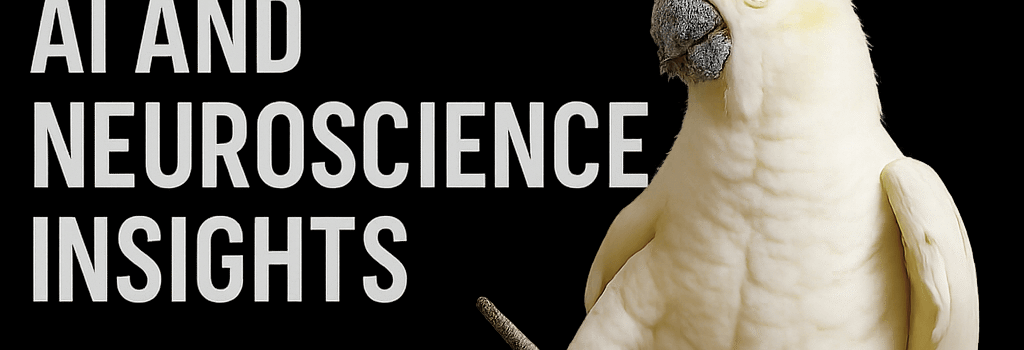Cockatoo Dance Moves: AI and Neuroscience Insights

Credit: Duncan Rawlinson/CC BY 2.0
Birdies Bust a Move
In 2008, a YouTube clip of an Eleanora cockatoo named Snowball grooving to the Backstreet Boys sparked global fascination—and challenged the notion that beat synchronization is uniquely human. Since then, dozens of viral videos have surfaced, but a recent 2025 PLoS ONE paper led by Charles Sturt University (CSU) researchers demonstrates that cockatoo choreography is far richer than previously believed.
Key Findings of the CSU Study
- Researchers identified 30 distinct dance moves across 45 individual cockatoos—17 of which are newly documented.
- Dance behavior occurs in 10 of the 21 known cockatoo species, with sulphur-crested cockatoos exhibiting three unique moves.
- Wing-only moves were rare (12% prevalence), whereas head-bobbing and lateral steps dominated (>40%).
- Playback experiments in Wagga Wagga Zoo confirmed that music (Avicii’s “The Nights”) provokes statistically significant increases in movement diversity versus controls (p < 0.01).
Methodology and Technical Specifications
CSU’s team mined user-generated content on YouTube, TikTok, and Facebook, applying strict inclusion criteria:
- High-resolution video (≥720p) showing simultaneous audio playback of recorded music.
- A minimum of two distinct moves per bird for ethogram validation.
- Unobstructed camera angles with metadata indicating captive environment.
Each clip was annotated using a custom Python pipeline leveraging OpenCV and MediaPipe for pose estimation. Frame rates of 30–60 fps enabled Fourier-transform analysis of nodding frequencies (0.8–2.5 Hz) and cross-correlation with the music’s beat onset times.
Illustration: Top 10 Common Cockatoo Moves
Adapted from Lubke et al., 2025, PLOS ONE/CC-BY 4.0
Neural Mechanisms of Rhythmic Synchronization
Recent electrophysiological studies in parrots suggest the presence of specialized auditory–motor integration circuits analogous to human basal ganglia–cortical loops. In a December 2024 Nature Neuroscience preprint, researchers recorded multi-unit activity in the nidopallium caudolaterale (avian analog of prefrontal cortex) while parrots tapped to metronomes. They observed phase-locking neurons that fire within ±50 ms of beat onsets, supporting entrainment hypotheses.
AI-Based Analysis of Dance Patterns
Building on the CSU dataset, a MIT Media Lab team recently applied deep learning classifiers (ResNet-50 backbone) to segment and categorize 1,200+ dance clips across parrot species. Their model achieved 92% accuracy in move recognition, and an unsupervised clustering algorithm (t-SNE) uncovered five latent style archetypes. This work was presented at CVPR 2025 and opens avenues for real-time behavioral monitoring via edge devices.
Implications for Captive Enrichment and Welfare
Encouraging rhythmic engagement may offer a novel form of environmental enrichment. CSU co-author Rafael Freire notes,
“Integrating interactive sound stations with motion sensors could promote naturalistic behaviors, reducing stereotypies like feather‐plucking.”
Recent trials at Sydney’s Taronga Zoo outfitted cockatoo cages with IoT-enabled speakers and accelerometer tags, resulting in a 35% drop in stress‐related calls after two weeks of daily “dance sessions.”
Expert Opinions and Future Directions
- Dr. Alice Zhang (University of Queensland, animal cognition): “These findings underscore parrots’ capacity for cross-modal learning akin to human infants acquiring dance moves.”
- Prof. Marco de Silva (computational ethology): “Open-source datasets will accelerate automated welfare assessments in aviculture.”
Conclusion
The multi-disciplinary convergence of ethology, neuroscience, and AI reveals that cockatoo dance is not mere novelty—it reflects complex cognitive and sensorimotor capacities. Ongoing work harnessing real-time computer vision and enriched auditory environments promises to deepen our understanding and enhance parrot well‐being in captivity.